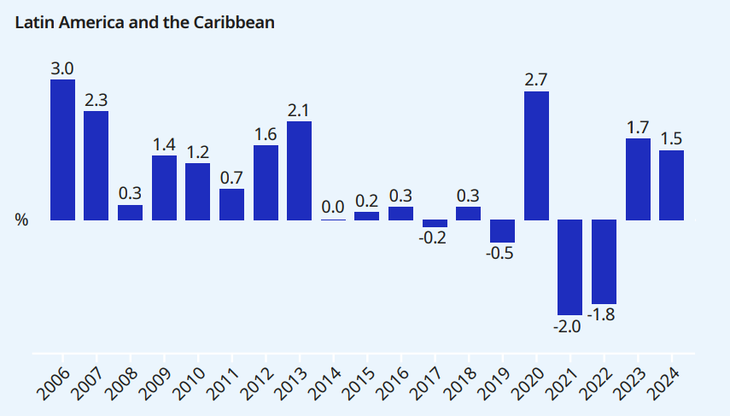Guatemala stands as the country with higher proportion of “underpaid” workers of Latin America and the Caribbean, with 51.4% receiving less than half of the median hourly wage, the highest percentage in the region. While, at the other extreme, there are Brazil and Mexicowhich have the smallest number of poorly paid employees, with a 10.8%.
The data comes from the “World Wage Report 2024-2025: Is wage inequality decreasing in the world?” of the International Labor Organization (ILO)which shows that real assets recovered around 1.8% in 2023 after a fall of 0.9% registered in 2022 globally.
However, in Latin America and the Caribbean This trend was not homogeneous, since factors such as inflation and the labor informality press on this indicator.
“Although more than 50% of countries adjusted their minimum wages in 2023, in most cases, the increases failed to compensate for the loss of purchasing power,” the report notes. In 2022, only 25% of the adjustments to minimum wages generated a positive real increase.
The report highlights that the informal economy remains a structural problem. In many countries in the region, the majority of workers in this sector have low incomes and lack basic job benefits.
Evolution of salaries in Latin America and the Caribbean
The average annual growth of salaries in the region went from 3% in 2006 to 0.7% in 2011, while the first loss occurred in 2017, when they decreased by -0.2%, although in 2018 they grew again at 0.3% and in 2019 they fell -0.5%. Since the pandemic, strong volatility is observed, according to the report.
“The presence of a strong composition effect is reflected in the 2.7% increase observed in 2020, followed by declines of around 2% in both 2021 and 2022, as low-wage workers returned to the labor market. and inflation was beginning to erode real wages,” the document says.
image.png
Argentina was not immune to this phenomenon. Even with the strong inflation in the years following the pandemic, salaries continued their real loss and did so contrary to the regional record, which shows growth in 2023. This data was to a greater extent driven by the good results of Brazil and Mexico (5.2% and 5.3%, respectively). Although the data for 2024 is preliminary, it is estimated that salaries will increase by 1.5%.
Productivity growth does not translate into salary improvement
The report highlights that in Latin America, productivity growth does not always translate into salary improvements, especially for workers in the lower segment of the salary distribution. Furthermore, structural inequality and labor informality limit the positive impact of productivity on real wages.
Regarding the gender barrier, the report shows that there is an overrepresentation of women at the lowest salary levels.
Finally, the ILO highlights the need to strengthen labor institutions, promote parity and guarantee an adequate minimum wage as key measures to reduce inequality and improve working conditions in the region.
Source: Ambito
I am an author and journalist who has worked in the entertainment industry for over a decade. I currently work as a news editor at a major news website, and my focus is on covering the latest trends in entertainment. I also write occasional pieces for other outlets, and have authored two books about the entertainment industry.




